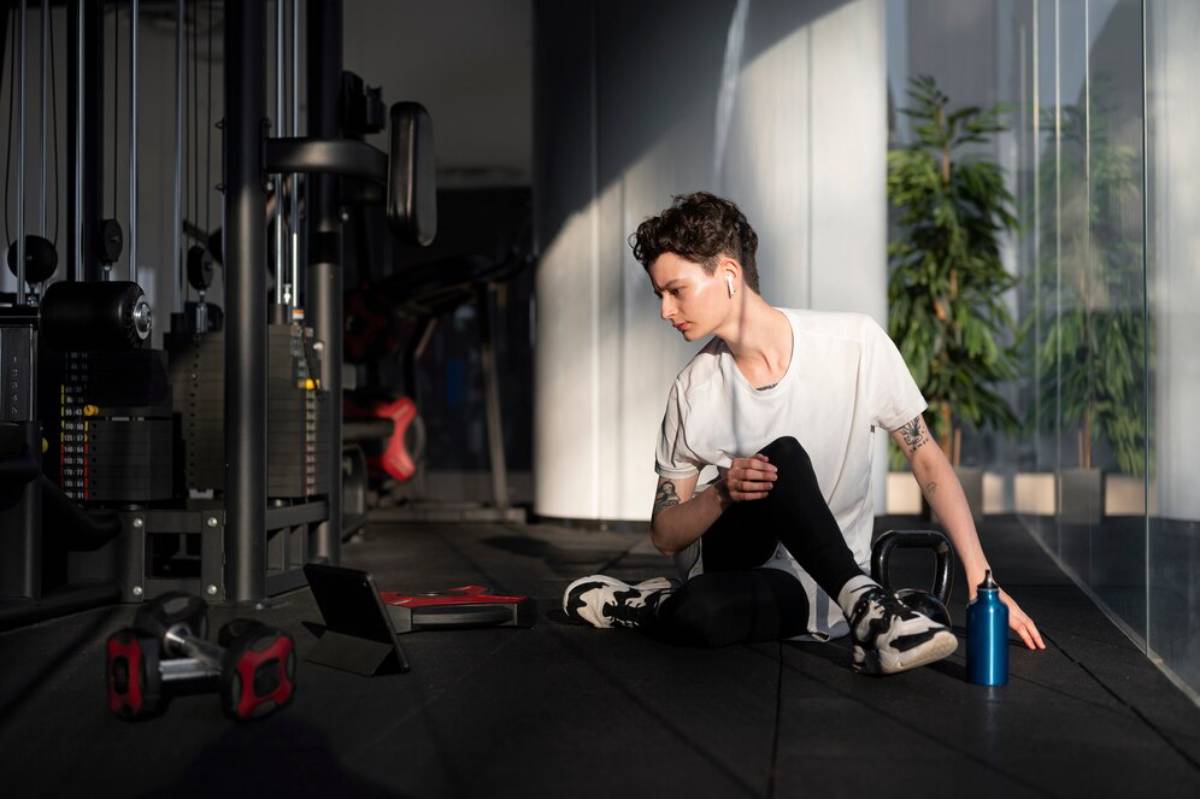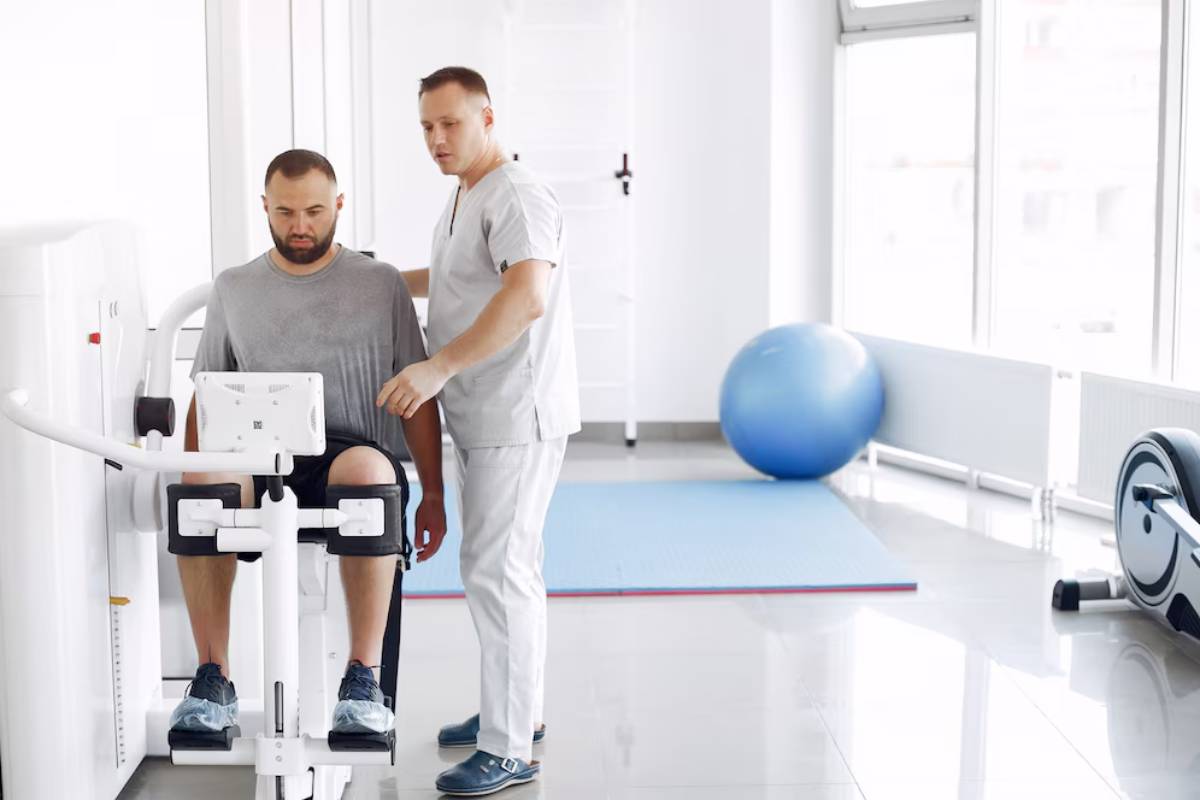
Low-Impact Exercises for Long-Term Mobility
As we age, staying active is crucial. We also need to protect our joints and keep moving. Low-impact workouts can transform your fitness journey, especially if you’re over 40. They help improve your mobility, flexibility, and strength. So, whether you’re already active or just starting, these exercises support long-term health.
Low-impact routines are easier on your joints than high-impact training. They help you get fit and improve movement quality. Plus, they lower the risk of injury.
This guide covers the best mobility exercises and low-impact options. These will help you move well today and for years to come.
Why Mobility Matters (Especially Over 40)
Mobility isn’t just about flexibility. It’s your body’s ability to move freely, with control and strength, through its full range of motion. Over time, habits like sitting too much, past injuries, or losing muscle with age can limit your movement and impact:
- Balance and coordination
- Joint health and posture
- Daily function and comfort
Adding mobility exercises to your fitness routine can reduce stiffness, prevent pain, and keep you agile. This is especially important if you’re over 40.

Benefits of Low-Impact Workouts
Low impact doesn’t mean low results. It’s one of the best ways to support lifelong health. This is especially true if you have joint issues or want to start a regular fitness routine.
Key Benefits:
- Protects joints and cartilage
- Reduces risk of injury
- Improves recovery and flexibility
- Supports cardiovascular and muscular health
- Suitable for all fitness levels
Let’s see how to add these benefits to your daily life with intentional movement.
Foundational Low-Impact Exercises for Daily Mobility
Here are key low-impact workouts that help keep and boost your long-term mobility. They can be done at home, in a gym, or outdoors.
1. Dynamic Stretching
Before a workout, dynamic movements warm up the joints and prepare the muscles. These are more active than static stretches and focus on the controlled range of motion.
Examples:
- Leg swings (front to back and side to side)
- Arm circles and shoulder rolls
- Hip openers
- Walking lunges with a twist
Time: 5–7 minutes before a workout

2. Walking or Incline Treadmill
Walking remains one of the simplest yet most effective low-impact workouts. It improves heart health, strengthens legs, and promotes coordination without stressing the joints.
To enhance results:
- Use a slight incline for glute and hamstring activation
- Walk at a brisk pace to elevate your heart rate
- Try intervals (alternate fast and moderate walking)
Duration: 20–30 minutes
3. Chair or Wall Squats
Squats support hip, knee, and ankle mobility—all key components for staying active as you age.
How to perform:
- Stand with feet shoulder-width apart
- Lower your body as if sitting back in a chair
- Keep weight in your heels and knees behind your toes
- Return to standing and repeat
Use a chair behind you for support if needed
Reps: 3 sets of 10–12
4. Modified Yoga Flow
Yoga combines strength, flexibility, and breathing—all essential elements for mobility exercises. Low-impact flows target the spine, hips, and shoulders while calming the nervous system.
Poses to Try:
- Cat-Cow (spinal mobility)
- Downward Dog (shoulder/hamstring flexibility)
- Low Lunge (hip opening)
- Seated Twist (core and back mobility)
Session: 15–30 minutes, 2–3x a week
5. Resistance Band Training
Resistance bands provide strength training without the joint stress of heavy weights. They’re perfect for maintaining muscle mass, which is especially important in fitness for people over 40.
Mobility-friendly band moves:
- Standing rows for posture
- Glute bridges with band
- Lateral band walks (hip stability)
- Shoulder external rotations
Reps: 2–3 sets of 10–15 for each move
6. Swimming or Water Aerobics
Water reduces the impact on your joints while providing full-body resistance. Swimming boosts heart health, increases flexibility, and builds lean strength. Plus, it’s easy on knees and hips.
Great for:
- Arthritis relief
- Active recovery
- Balance and coordination
Frequency: 2–3x per week
Weekly Routine Example for Long-Term Mobility
Here’s a weekly plan that’s gentle on the body. It includes strength, cardio, and mobility exercises. This plan is designed for those over 40 and beyond.
| Day | Activity |
|---|---|
| Monday | Yoga + Resistance Bands |
| Tuesday | Brisk Walk (30 mins) |
| Wednesday | Water Aerobics or Light Swim |
| Thursday | Chair Squats + Core Activation |
| Friday | Dynamic Stretching + Yoga Flow |
| Saturday | Incline Walk or Outdoor Hike |
| Sunday | Rest or Light Stretching |
Depending on your ability or fitness goals, this plan can be tailored to your needs and scaled up or down.
Tips for Staying Consistent with Low-Impact Movement
Building mobility takes consistency—but it doesn’t have to be overwhelming. These tips help keep your routine effective and enjoyable:
Make It Part of Your Lifestyle
Schedule it like a meeting. Add a walk before breakfast or a short yoga flow before bed.
Listen to Your Body
Pain is a signal, not a challenge. Modify movements as needed and respect your current range.
Track Progress
Mobility isn’t just about touching your toes—how easily you can squat, turn, and lift without discomfort. Keep notes or videos of your progress over time.
Keep It Fun
Use music, podcasts, or outdoor environments to keep your workouts refreshing and engaging.

When to Consult a Pro
If you’re healing from an injury, have joint issues, or feel lost, consider teaming up with:
- A physical therapist
- A certified personal trainer familiar with fitness over 40
- A yoga or Pilates instructor focused on mobility
Get a custom program to increase your confidence and safety as you move.
Final Thoughts: Movement Is Longevity
The goal of the low-impact movement isn’t just fitness—it’s the freedom to hike with your family, garden without pain, or dance in your kitchen at 70.
By prioritising mobility exercises and low-impact workouts, you’re investing in a longer, fuller, stronger, and more vibrant life.
No matter your age or ability, it’s never too late to move better. Start with a breath, a walk, or a stretch—and keep showing up for your future self.